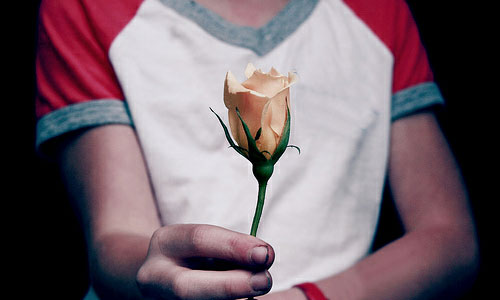Sad Love Quotes Images Pictures Biography
source link ( google.com.pk )Urdu language and literature, beyond their spatial confines, have been more heard of than read. With the publication of some notable translations, some of them in the recent past, a new literary culture seems to be emerging from the canons of the old. Modern Urdu poetry, of which this is the first comprehensive selection, has its own tradition of the new. It has developed through stages of a variegated literary history. This history has absorbed both the native and non- native elements of writing in Arabic and Persian, and the Urdu language has survived through several crises and controversies. Some of these are related to its growth and development, its use by the British to divide the Hindus and the Muslims. it estrangement in the land of its birth following the Partition of India and its interaction with Hindi once akin but now an alien counterpart. Even with the extinction of those generations of Sikhs in Punjab, Muslims in Bengal and Hindus elsewhere, who nurtured the language with love and for whom it was the mark of a cultivated man, the language has survived and developed. It is now the cultural legacy of India and the adopted national identity of Pakistan, and significant new literature has emerged in both countries.
Literary centre : Deccan, Delhi and Lucknow
Literature in Urdu grew at three different centres: Deccan, Delhi and Lucknow. As it happened, the Deccan emerged as the earliest centre, even though the language had first developed in northern India, as a result of an interesting linguistic interaction between the natives and the Muslim conquerors from Central Asia, who settled there in the twelfth and thirteenth centuries, The period stretching roughly from the middle of the fourteenth centuries to the middle of the eighteenth produce a number of poets. They are claimed both by Urdu and Hindi literary historians, but Quli Qutub Shah (1565-1611) is generally acknowledged as the first notable poet, like Chaucer is English, with a volume of significant poetry in a language later named Urdu. He was followed by several others, among whom Wali Deccani (1635-1707) and Siraj Aurangabadi ( 1715-1763) deserves special mention. Delhi emerged as another significant centre with Mirza Mohammad Rafi Sauda (1713-80), Khwaja Mir Dard (1721-85), Mir Taqi Mir (1722-1810), Mirza Asadullah Khan Ghalib (1797-1869) and Nawab Mirza Khan Dagh (1831-1905). It reached its height of excellence during the eighteenth and nineteenth centuries. Lucknow made its way as the third important centre with Ghulam Hamdani Mushafi (1725-1824), Inshallah Khan Insha (1757-1817), Khwaja Haidar Ali Atish (1778-1846), Iman Baksh Nasikh (1787-1838), Mir Babr Ali Anis (1802-74) and Mirza Salamat Ali Dabir (1803-1875). These literary capitals, where the classical tradition developed, had their individual stylistic and thematic identities, but broadly it may be said that the ghazal (love lyric) reached its zenith with Mir and Ghalib, qasida (panegyric) with Sauda, mathnawi (romance) with Mir Hasan and marthiya (elegy) with Anis and Dabir.
Founded in Chicago by Harriet Monroe in 1912, Poetry is the oldest monthly devoted to verse in the English-speaking world. Harriet Monroe’s “Open Door” policy, set forth in Volume I of the magazine, remains the most succinct statement of Poetry’s mission: to print the best poetry written today, in whatever style, genre, or approach. The magazine established its reputation early by publishing the first important poems of T.S. Eliot, Ezra Pound, Marianne Moore, Wallace Stevens, H.D., William Carlos Williams, Carl Sandburg, and other now-classic authors. In succeeding decades it has presented—often for the first time—works by virtually every major contemporary poet.
Poetry has always been independent, unaffiliated with any institution or university—or with any single poetic or critical movement or aesthetic school. It continues to print the major English-speaking poets, while presenting emerging talents in all their variety. In recent years, more than a third of the authors published in the magazine have been young writers appearing for the first time. On average, the magazine receives over 90,000 submissions per year, from around the world.
By 1912, when Harriet Monroe founded Poetry, the texture of daily and cultural life already felt recognizably modern: new building materials and methods produced the first skyscrapers, five million Americans went to the movies every day, and the boundaries of acceptability in art and music were being redrawn by the likes of Stravinsky, Schoenberg, Picasso, and Matisse. Monroe's response to these changes was not uniformly positive—when she saw Marcel Duchamp's 1912 painting, "Nude Descending a Staircase," at the New York Armory Show, she compared it to "a pack of brown cards in a nightmare or a dynamited suit of Japanese armor"—but she embraced the gesture of the dissident artists: "They throw a bomb into the entrenched camps, give to American art a much-needed shaking up." Painters and sculptors had answered the new century's challenge, discovering new forms of beauty and a fresh vocabulary. But American poetry remained stuck in the twilight of the nineteenth century and an exhausted Romanticism inherited from England:
As some dusk mother shields from all alarms
The tired child she gathers to her breast,
The brunette Night doth fold me in her arms,
And hushes me to perfect peace and rest.
These lines, from Ella Wheeler Wilcox's poem "Night," are typical of the verse then sought after by American magazines and newspapers. When Poetry's first issue appeared in October 1912, the fifty-one-year-old Monroe could not have foreseen the magazine's impact. But it was exactly as if a bomb had exploded, and nothing would ever look, or sound, the same in American poetry again.
Despite the popular view of most poets as solitary, hermetic people, communities are vital to most working poets – which is why, in any given week, thousands of open-mic and guest poetry readings take place in the United States. Whether we’re studying the history of poetry or listening to an individual poet, it’s enticing to make connections between two poetic periods, or between a poet and his or her influences. In doing so, we invariably set foot inside a poetic movement or community.Throughout history, there have been hundreds of major and minor poetic movements and communities. Major community-based movements – such as the Ancient Greek poetry schools, Provencal literature, Sicilian court poets, Elizabethan and Romantic poets, American Transcendentalists, Paris expatriate (Surrealist), and Beat poets – changed the course of poetry during and after their respective eras.
Sad Love Quotes Images Pictures Sad Love Quotes For Her For Him In Hindi Photos Wallpapers

Sad Love Quotes Images Pictures Sad Love Quotes For Her For Him In Hindi Photos Wallpapers

Sad Love Quotes Images Pictures Sad Love Quotes For Her For Him In Hindi Photos Wallpapers

Sad Love Quotes Images Pictures Sad Love Quotes For Her For Him In Hindi Photos Wallpapers
.jpg)
Sad Love Quotes Images Pictures Sad Love Quotes For Her For Him In Hindi Photos Wallpapers

Sad Love Quotes Images Pictures Sad Love Quotes For Her For Him In Hindi Photos Wallpapers

Sad Love Quotes Images Pictures Sad Love Quotes For Her For Him In Hindi Photos Wallpapers

Sad Love Quotes Images Pictures Sad Love Quotes For Her For Him In Hindi Photos Wallpapers

Sad Love Quotes Images Pictures Sad Love Quotes For Her For Him In Hindi Photos Wallpapers

Sad Love Quotes Images Pictures Sad Love Quotes For Her For Him In Hindi Photos Wallpapers

Sad Love Quotes Images Pictures Sad Love Quotes For Her For Him In Hindi Photos Wallpapers
No comments:
Post a Comment